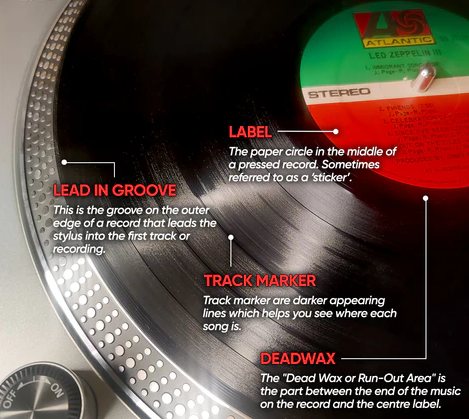Vinyl records are more than just a medium for music. They are physical artifacts that embody the rich history of recorded sound, and their resurgence in popularity is a testament to their unique appeal. But what makes up a vinyl record? Let’s delve into the intricate details and examine each component that contributes to the magic of vinyl.
A Brief Overview
Vinyl records, first introduced in the late 1940s, revolutionized the music industry with their superior sound quality and durability compared to shellac discs. Despite the advent of digital formats, vinyl has experienced a renaissance, with fans cherishing the tactile experience and warm, analog sound.
The Anatomy of a Vinyl Record: The Record Itself

The heart of a vinyl record lies in its grooves. These microscopic spirals carved into the vinyl surface are a physical representation of sound waves. When a needle (or stylus) traces these grooves, it vibrates to reproduce the recorded sound.
Records are typically made from polyvinyl chloride (PVC), a material chosen for its rigidity and low friction. The process begins with a lacquer master disc being cut with the audio signal. This master is then used to create a metal stamper, which presses the grooves into the heated vinyl3.
Different materials can affect a record’s quality. Virgin vinyl, free from impurities, produces the best sound but is more expensive. Recycled vinyl, though environmentally friendly, may contain impurities that degrade sound quality.
The Role of Labels
Centered on each side of a record is a label, providing essential information like the artist’s name, album title, tracklist, and record company. Labels can also be an avenue for additional artwork or messages from the artist. Some labels even have a unique design or color associated with a particular record company.
The Importance of Sleeves and Inserts
The outer sleeve protects the record from dust and damage, but it also serves a more artistic purpose. It’s a canvas for album artwork, providing a visual representation of the music within. Iconic album covers have become ingrained in popular culture, enhancing the overall experience of owning and listening to vinyl.
Inner sleeves, often made of paper or plastic, provide an additional layer of protection for the record. They can also feature lyrics, credits, additional artwork, or notes about the album.
Some releases include inserts like posters, photos, or even download codes for a digital copy of the album, adding further value for collectors.
In Conclusion: The Harmony of Components
In essence, a vinyl record is a symphony of components, each playing its part in delivering the music we love. From the grooves that capture sound waves to the artwork that adorns the sleeves, every aspect contributes to the unique charm of vinyl. Understanding these elements deepens our appreciation for this enduring format, reminding us that vinyl records are truly a labor of love.
